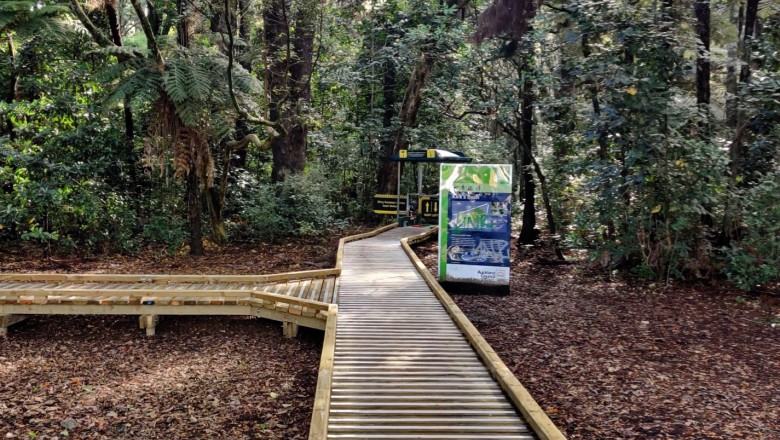Helping protect our kauri
South Auckland’s first urban kauri dieback hygiene stations have been installed by Citycare Property at Clevedon Scenic Reserve in South Auckland and Kirks Bush in Papakura.
Getting people to clean their shoes and boots before entering and exiting the kauri forests is considered a key measure in protecting healthy kauri trees and preventing kauri dieback disease (Phytophthora agathidicida) from spreading.
“We’re really proud to be helping out to protect high-value kauri ecosystems and minimise the risk of spreading kauri dieback,” Citycare Property Project Manager Sumeet Prasad said.
Just a pinhead of mud or soil can spread the fungus-like organism, which infects the kauri tree through its roots. People are major carriers of the disease, as are larger animals like dogs, pigs and goats.
Auckland Council commissioned Citycare Property’s minor capex team to install four kauri dieback hygiene stations at Kirks Bush and another one at Clevedon Scenic Reserve as part of its region-wide response to the disease threatening the native tree.
The work at Kirks Bush also included building some boardwalks to protect the forest.
Both locations had been closed while Auckland Council assessed how to protect the kauri in the reserves.
At Clevedon, the Citycare Property team removed the existing cleaning station and installed a new one – the Mark 3 kauri dieback hygiene station manufactured by MWDesign in Hamilton. At Papakura, the four stations and boardwalk were new additions to Kirks Bush.
Both reserves are popular with locals as they’re close to houses and built-up areas, unlike some of the more remote conservation areas where kauri grow in the region. For example, on average 200 people each day use Clevedon Scenic Reserve at peak times.
Community involvement has been a key part of the work to protect these kauri, with an example being the blessing of the Kirks Bush site by mana whenua with the Citycare team and neighbours, Auckland Council Kauri and Track Specialist Programme Manager Grant Jennings said.
He emphasised that it takes just a few seconds for park users to stop to brush and spray their shoes in the automated stations, but those few seconds are crucial to protect the kauri.
Clevedon Scenic Reserve re-opened in December and it will be exciting to re-open Kirks Bush for the local community in a couple of weeks, he said.
“As a council, and personally, for those of us who enjoy being outdoors, I feel that we have a duty of care to protect our forests for future generations. This sense of responsibility guides our approach,” said Lisa Tolich, Auckland Council’s Biosecurity Team Manager - Kauri Dieback.
The multi-faceted approach includes track closures in high risk areas, controlled area notices enforcing use of the hygiene stations for open tracks, surveillance, education and research.
Sumeet undertook special kauri hygiene compliance training with Auckland Council to become registered as Citycare’s kauri dieback project manager. For any work in bush where kauri has been identified, a registered person must supervise.
Maintaining the kauri dieback hygiene stations is now also part of Citycare Property’s responsibilities.
That mainly involves checking the station is working correctly and topping up the liquid steriliser used for walkers’ shoes.

